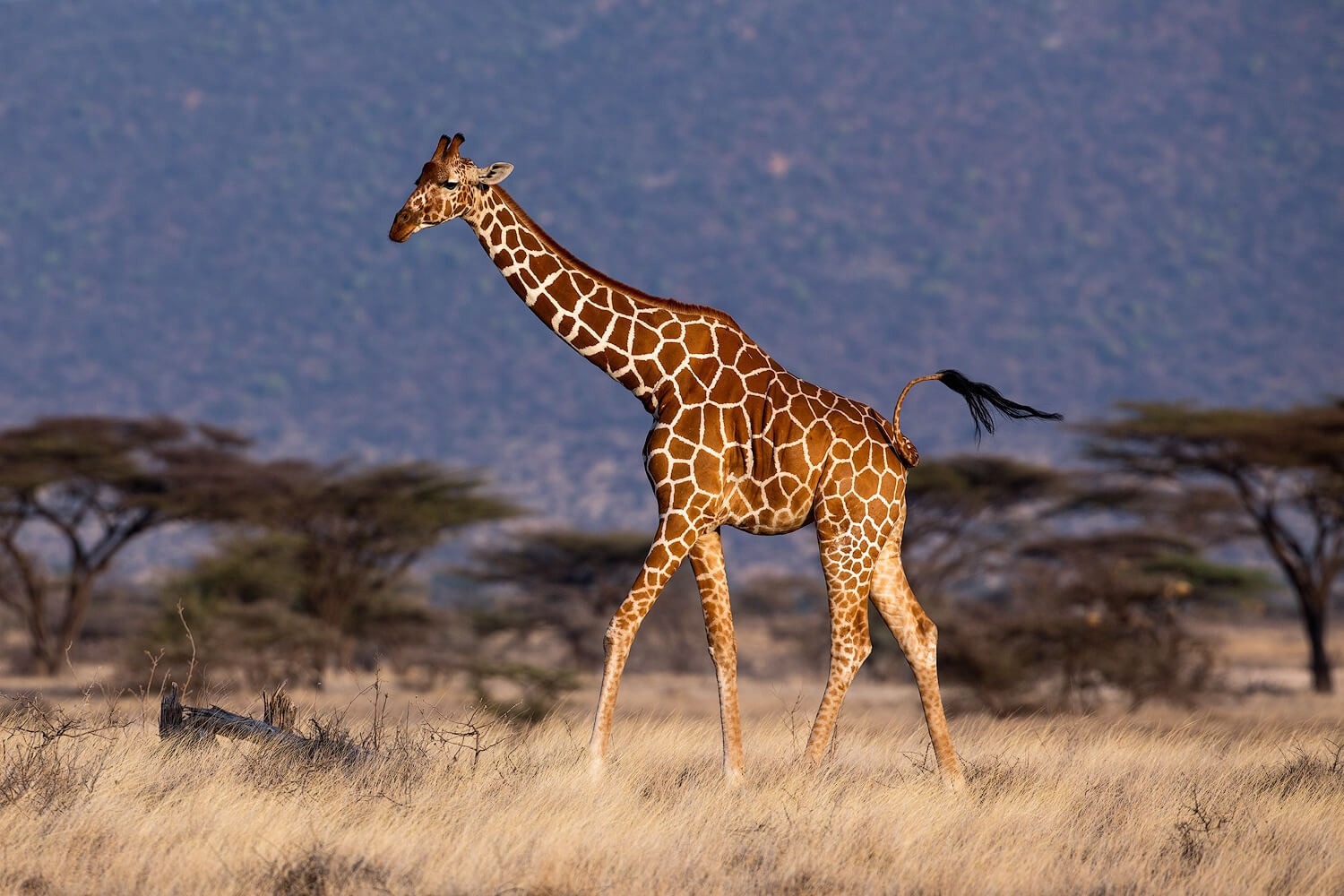In a recent study, a team of researchers from the University of Copenhagen utilized whole-genome sequencing data to investigate the evolutionary processes taking place within giraffes.
 Reticulated giraffe, Buffalo Springs, Kenya. Image Credit: Mogens Trolle
Reticulated giraffe, Buffalo Springs, Kenya. Image Credit: Mogens Trolle
The authors of the study were particularly interested in ascertaining whether different populations of giraffes had truly been cut off from each other for extended periods, as is typically required before new species can emerge.
The adaptive evolution of giraffes is a remarkable demonstration of their beauty and strength. Despite this, in recent times, they have become infamous for a new reason. Reports suggest that there could be as many as four distinct giraffe species rather than just one species. It is uncommon for highly visible and well-known “flagship” taxa to undergo significant taxonomic reevaluations.
The proposition sparked controversy within the scientific community and garnered a great deal of media attention. This matter is of great importance, as most nature conservation efforts are focused on individual species, requiring each species to have its conservation action plan and be monitored independently.
If four distinct species of giraffe are accepted instead of just one, each of them will have a smaller population size and be more susceptible to extinction. This would significantly increase the stakes and costs associated with conservation efforts.
Giraffes Form Four Distinct, but not Isolated Lineages - and Some are Even Hybrids
The findings of the latest research, which were released in Current Biology, validate that giraffes are tremendously structured genetically, indicating that populations tend to differentiate from one another quite easily.
This also implies that giraffes seem to be divided into evolutionary lineages that are significantly distinct from each other genetically. However, the study also revealed some unexpected findings:
When we started getting results from our analyses of gene flow between different giraffe lineages, we had to check twice. The results showed not just a little gene flow here and there, but major hybridization events. For example, the reticulated giraffe, which occurs in Kenya, Ethiopia, and Somalia, appears to be the result of a 40%-60% mixture of an ancient northern lineage and an ancient southern lineage of giraffes, and therefore a hybrid.”
Laura D. Bertola, Study First Author and Postdoc, Department of Biology, University of Copenhagen
Laura D. Bertola adds, “Today, the other descendants of these ancient northern and southern giraffes sit at either end of the giraffe tree and are highly genetically differentiated, but at some time in the past they met and interbred, giving rise to the reticulated giraffe.”
The researchers discovered instances of past gene transfer between various branches of the giraffe family tree. There were so many instances of gene transfer between different giraffe lineages that the evolutionary history of giraffes appears more like a “reticulated” network than a tree-like structure.
What This Means for Giraffes and Their Conservation
There is disagreement among biologists regarding the optimal definition of a species and the point at which two populations diverge enough to be considered distinct species. It is a common misconception, though, that substantial gene flow can only occur between populations that are members of the same species and not others.
Given that giraffe lineages that are highly genetically differentiated today have a history of widespread gene flow, this raises serious questions about whether high genetic differentiation - at least in giraffes - is always indicative of speciation.
Our findings touch on a very delicate matter in biology, namely that we do not have a universally agreed species concept. Therefore, it can be very difficult to settle how many species there are within a group. However, we show something more tangible which has so far been overlooked in evolutionary studies on giraffes: namely that giraffe lineages have had extensive gene flow among them.”
Rasmus Heller, Associate Professor and Study Senior Author, Department of Biology, University of Copenhagen
Rasmus Heller adds, “Giraffes seem to have retained their ability to interbreed freely, which they also still do in captivity. So, instead of solving how many species of giraffes there are, we prefer to highlight that gene flow has occurred pretty freely among even the most genetically differentiated lineages of giraffes, whenever conditions were right for this to happen.”
The study also concludes that giraffe species or not, the various lineages are so genetically distinct from one another that they should be afforded extensive protection throughout their entire range. Effective biodiversity protection requires not only considering species diversity but also species diversity within and between species.
Giraffes are such endlessly fascinating animals, and this study confirms just how much genetic variation there is even on small geographical scales. This provides a further incentive for conserving all the different lineages of giraffes, whether they be called species, subspecies, populations, or whatever. Studies that focus on the whole complexity of the evolutionary process are needed, instead of studies focusing on answering simplified binary questions such as whether or not there is one, four or dozens of species, whatever that may be.”
Yoshan Moodley, Study Co-Author, University of Venda, South Africa
The study is a component of the African Wildlife Genomics research framework, which is run by research teams at the University of Copenhagen’s Department of Biology.
The African BioGenome Project, an African-led endeavor to apply genomics to conservation and capacity building in Africa, is linked with this research framework.
Source:
Journal reference:
Bertola, D., L. et al. (2024) Giraffe lineages are shaped by major ancient admixture events. Current Biology. doi.org/10.1016/j.cub.2024.02.051